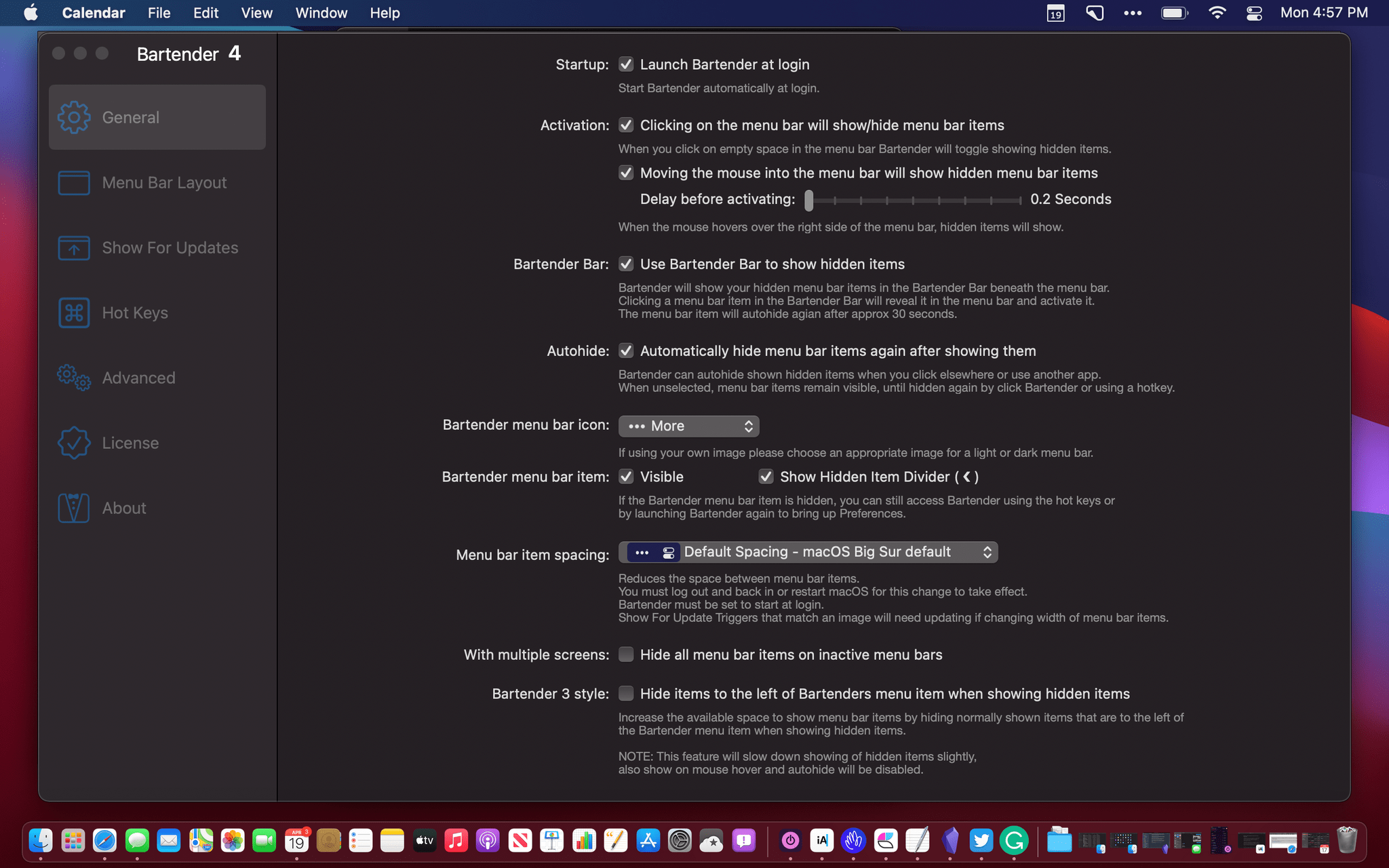

- #How to get to menu bar on mac without mouse how to
- #How to get to menu bar on mac without mouse update
- #How to get to menu bar on mac without mouse software
- #How to get to menu bar on mac without mouse free
Step 3.Pick the old backup files that you want to delete. If you don't see the icon, navigate to ' System Preferences' > ' Time Machine' and check the ' Show Time Machine' in menu bar box. Now, the question is - How can I delete these large backups from Mac? Below, we have presented you with 4 ways to removing Time Machine backups, present in your Mac. Thus, for the above reasons, you can find vast Time Machine backups on Mac, and when they fill up your Mac, the older ones have to be removed.
Different types of other backup apps present in the system. It may use the backup space within a short time. Any minor modification affects the file fully. Virtualization apps- In a few instances, virtualized OS remains saved in OSX files. You may also find that these applications slow down the backup process. There are various applications, for which the backups become very large. 
The updating process for macOS will also result in a larger backup because it can update or add several files.

This continuous backing process will create a huge amount of data that occupies your Mac storage. Time Machine analyzes your macOS and keeps the hourly backups of the last 24 hours, so as to your daily and weekly backups. We have found out the potential reasons behind it. However, some users have found large backups while using their Time Machine applications.
Mac has integrated Time Machine software to its OS X 10.5 and has ensured a smooth, reliable operation. However, when the backup files piles up over time, they will be hogging more and more space on your Mac. While you have unintentionally deleted the media, emails and documents or other files you needed, Time Machine helps you to retrieve them again. The presence of this program helps you in recovering the files very easily. It will automatically back up all of your files on the Mac, including pictures, music, documents, and system files, etc. Time Machine is an integrated backup program that macOS has provided. Time Machine Backup - Automatically Back Up All Files on Mac
Bonus Tip: How to Restore Time Machine Backups If Accidentally Deleted. An Ultimate Solution to Delete Backups or Free Up Space on Mac. How to Delete Backups on Mac with 3 Easy Methods. Why Time Machine Backups Are So Large? Where Do They Store?. Time Machine Backup - Automatically Back Up All Files on Mac. Google Chrome no longer has a menu bar, per se, but instead relies on the vertical ellipsis (three dots) on the far right of the address bar. Mozilla Firefox has this same functionality. That popup menu has options for several different toolbars you might want to display. The toolbar menu pop-up with the Menu bar checked. Make sure that’s checked, and the menu toolbar will reappear. I did call it a “toolbar”, and that’s the key to making it appear all the time.Īpproach #2: right-click in an empty area next to the tabs, or on the Favorites button, and you’ll see a dropdown menu, one item of which is “Menu bar”. This works when you’re in the full-screen F11 mode above, too. This will make the menu toolbar appear temporarily, and you can use the keyboard or mouse to access it normally, after which it goes back into hiding. Internet Explorer showing the menu bar in response to pressing ALT. menu bar may default to being hidden in IE, as you can see from the “before” image above but it’s easy to get back.Īpproach #1: press and release the ALT key. In fact, F11 has become enough of a pseudo-standard that if you find yourself in this same predicament in any application, give it a try. If you find yourself in this situation unexpectedly, just press F11 again, and it should return to normal.į11 works the same way in Edge, Google Chrome and Mozilla Firefox, meaning that if you suddenly find yourself full-screen and with no address or menu bar in those browsers, try hitting F11. Here’s Internet Explorer (showing the current contents of ), displaying its menu and toolbar as normal: Default Internet Explorer showing Ask Leo!Īnd here it is after pressing F11, accidentally or otherwise: A portion of Internet Explorer showing Ask Leo! after pressing F11.į11 instructs Internet Explorer to a) go full-screen, and b) hide all the menu bars, toolbars, and window frames. I’ll examine those, and show you how to get your toolbar, menu, or whatever it is that you’re missing back.Ī lot of people get bit by this one. It’s easy to accidentally hide menus and toolbars. From your description, I’m going to assume you mean that all this is happening within Internet Explorer, though similar features are present in other browsers (as well as other applications).







 0 kommentar(er)
0 kommentar(er)
